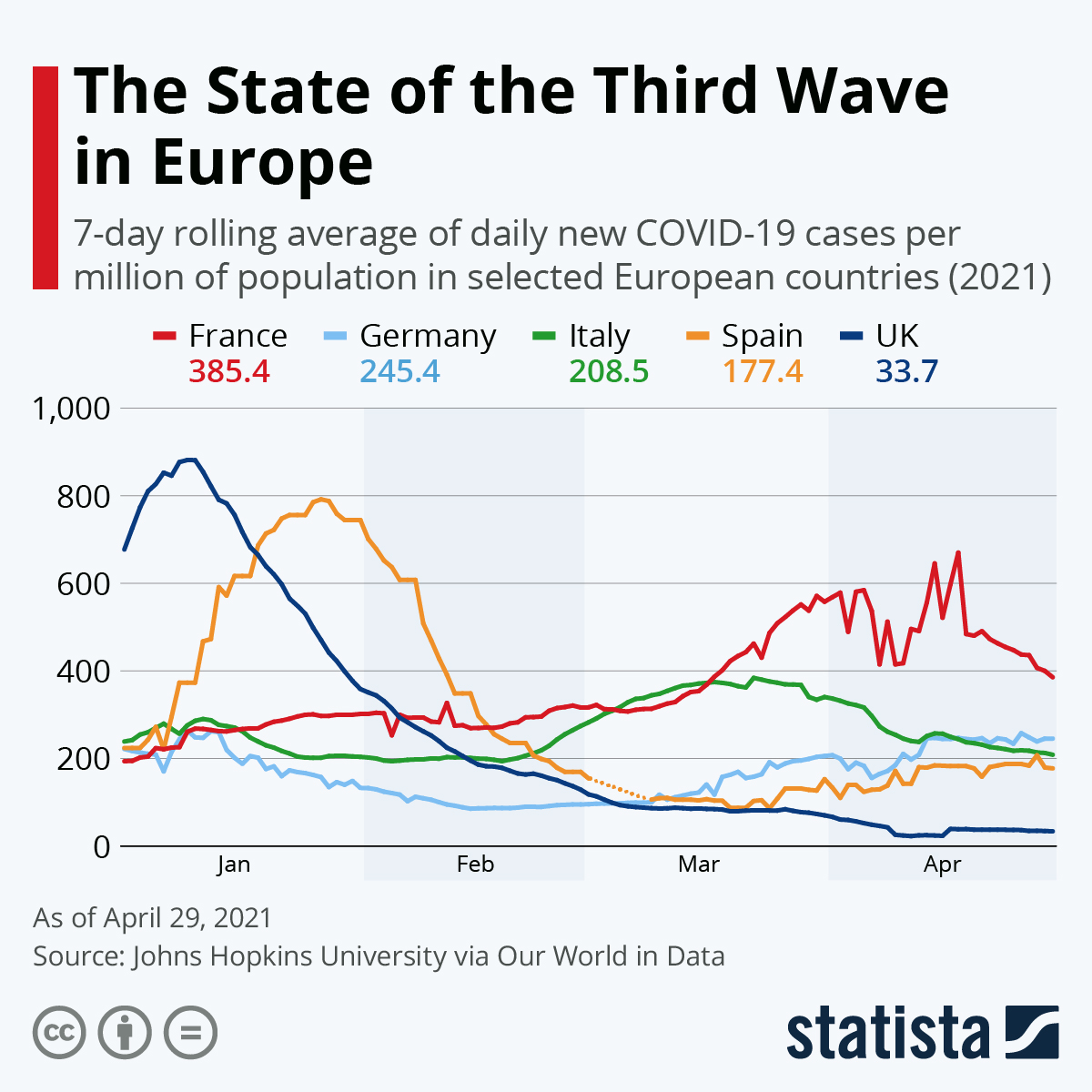Despite still experiencing one of the highest COVID-19 virus caseloads relative to population in Europe, France today announced its exit strategy which would see the country reopen (except nightclubs) until June 30. Secondary students are already starting to return to schools on Monday. Outdoor dining, non-essential shops and cultural venues could reopen as soon as mid-May with occupancy limits. As of early June, health passes are supposed to govern entry to larger events. The curfew - currently set at 7 p.m. - is being pushed back incrementally before ending June 30.
With the UK already reopening after a very successful vaccination campaign, the frenzy to reopen is not limited to France. Italy, which like France is experiencing falling case numbers, opened outdoor dining in three quarters of regions until the curfew at 10 p.m. on Monday. Previously, even in regions deemed low risk, restaurants had to shutter at 6 p.m. Cultural venues reopened simultaneously at 50 percent capacity, while sports venues and amusement parks will begin operations slowly from July 1.
Spain and Germany are currently seeing infection numbers stagnate. While Germany has not set another comprehensive opening strategy after a failed attempt in early March, Spain has also set its eyes on June 30 for a reopening, but will stick to its method of letting the regions decide the details for the tentative date. Similar to the Italian plan, but in contrast to France's decisions, schools will remain mostly closed in Spain until the fall semester.
According to numbers by Johns Hopkins University published on Our World in Data, the UK and Spain experienced their third waves early on in the year and in short succession with the fall's second waves. While the UK's battle with the B.1.1.7 variant and subsequent successful vaccination campaign made for a stark improvement of the situation, the situation in the rest of Europe's major countries looks more muddled.
France was one of the first in Europe to implement a second lockdown in late October, but was more hesitant during the third wave. The country locked down for a third time starting in mid-March. The UK also locked down for a second and third time, once in the fall and once early in 2021. Germany went through the two waves without ever coming out of its second lockdown, which started November 1, but was tightened significantly on December 16. Italy, like Spain, continued to rely on a regional lockdown system.





















